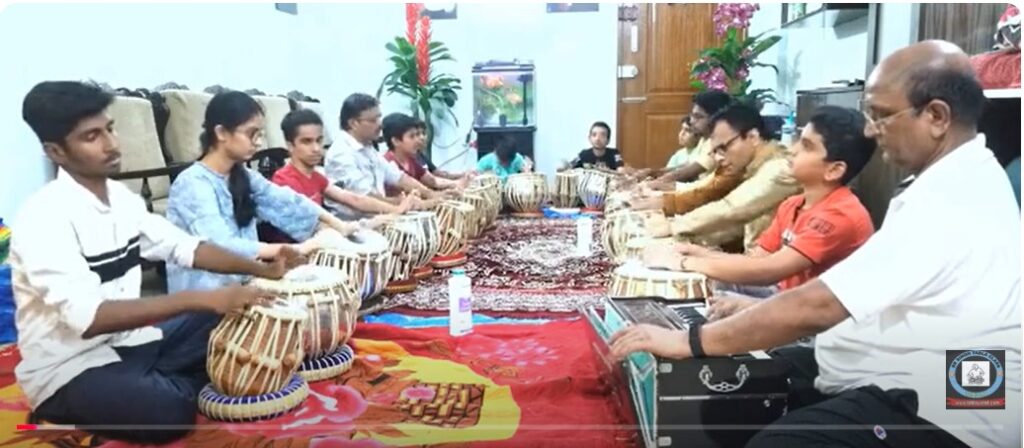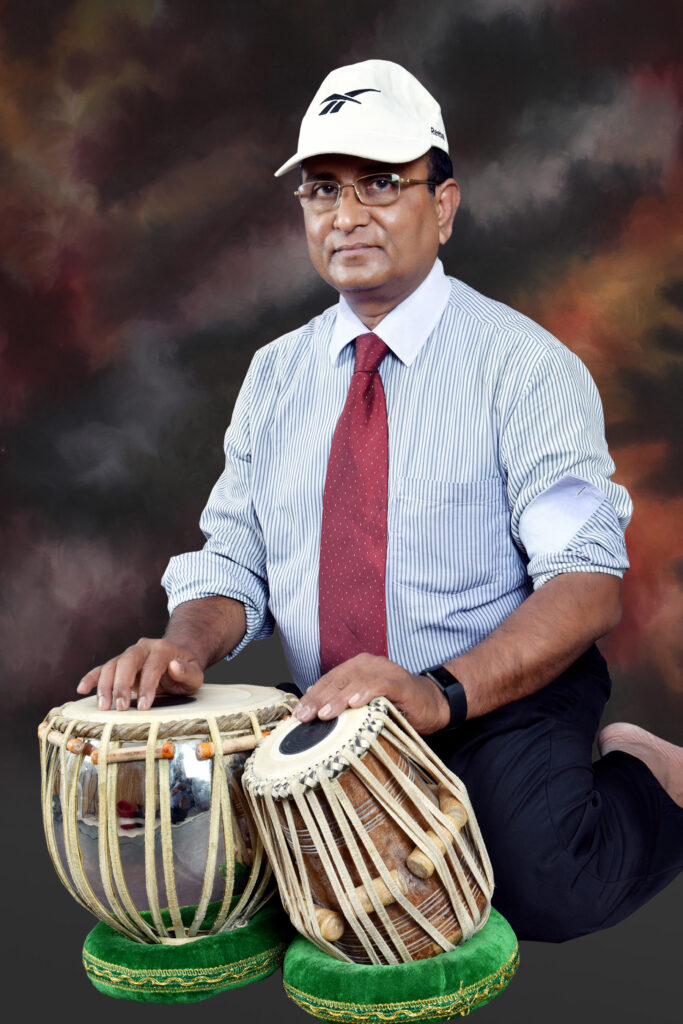Understanding Tabla: Taal, Theka, Avartan, Kayda, Rela, Gat, and Pranas,The tabla, one of the most expressive percussion instruments in Indian music, is deeply rooted in rhythm and tradition. Whether in Hindustani classical music, fusion, or Bollywood soundtracks, the tabla’s intricate rhythmic patterns create a mesmerizing musical experience. To fully appreciate this instrument, one must understand the fundamental rhythmic concepts that shape its playing style. In this blog, we’ll explore key tabla elements: Taal, Theka, Avartan, Kayda, Rela, Gat, and Pranas of Tabla.
1. Taal: The Foundation of Rhythm
In Indian music, Taal (ताल) is the rhythmic framework. Just as melody follows a raga, rhythm follows a taal. A taal consists of a fixed number of beats (matras) arranged into groups (vibhags), forming a repeating cycle. Different taals have different structures and moods—some are slow and meditative, while others are fast and energetic.
Commonly Used Taals in Tabla
- Teentaal (16 beats) – Most common in Hindustani classical music.
- Jhaptaal (10 beats) – Used in semi-classical and instrumental music.
- Ektaal (12 beats) – Common in classical vocal and instrumental compositions.
- Dadra (6 beats) – Frequently used in light music and bhajans.
Each taal has a sam (first beat, emphasized) and khali (empty beat, de-emphasized), which give the rhythm its character.
2. Theka: The Rhythmic Groove
A Theka (ठेका) is the basic rhythmic pattern that represents a taal when played on the tabla. It serves as a guide for musicians, keeping time and structure within the rhythm cycle. Theka consists of specific bols (tabla syllables) that define the taal.
For example, the theka of Teentaal (16 beats) is:
👉 Dha Dhin Dhin Dha | Dha Dhin Dhin Dha | Dha Tin Tin Ta | Ta Dhin Dhin Dha
Each tabla composition or improvisation is based on the foundation of a theka. The variations and embellishments bring out different expressions within the same taal.
3. Avartan: The Repeating Cycle
An Avartan (आवर्तन) is one full cycle of a taal. Whether it is a short cycle (6 beats of Dadra) or a long one (16 beats of Teentaal), an avartan helps musicians align their compositions with the rhythmic cycle.
In live performances, tabla players use avartan as a reference point, ensuring they return to sam at the end of each cycle. A well-executed avartan helps create anticipation and excitement in the performance.
4. Kayda: The Art of Improvisation
A Kayda (कायदा) is a structured composition in tabla, used for improvisation and practice. It follows a specific theme-and-variation format, where a rhythmic phrase (mukhda) is developed with variations.
Example of a Kayda in Teentaal:
Theme: Dha TiRaKeTe Dha TiRaKeTe | Tin Na TiRaKeTe Dhin Na TiRaKeTe
Variation: Dha Dha TiRaKeTe Dha TiRaKeTe | Tin Tin Na TiRaKeTe Dhin Na TiRaKeTe
Kaydas are essential for tabla players because they teach control, precision, and creativity. Many famous tabla maestros have developed unique kaydas that are widely practiced.
5. Rela: The Fast and Flowing Composition
A Rela (रेला) is a rapid, rolling composition played at high speed. Relas create a sense of excitement and energy in performances, often resembling a continuous flow of rhythmic strokes.
Unlike kaydas, which develop systematically, relas are designed for speed and fluidity. They are commonly played in tabla solos, especially towards the climax of a performance.
Example of a Rela in Teentaal:
Dha TiRaKeTe Dha TiRaKeTe Dha TiRaKeTe Dha TiRaKeTe |
Tin Na TiRaKeTe Dhin Na TiRaKeTe Tin Na TiRaKeTe Dhin Na TiRaKeTe
6. Gat: The Composition with Melody
A Gat (गत) in tabla refers to a fixed rhythmic composition that often has a melodic or lyrical quality. Gats can be played in various styles, including traditional, Banarasi, and Punjab gharanas.
Gats are often accompanied by tukras (short rhythmic phrases) and are performed in Kathak dance recitals or instrumental music settings.
Example of a Gat:
Dha Dhataka Thunga | Dhin Na Na Ka | Tin Na Na Ka | Dhin Na Na Ka
Gats add an expressive and artistic touch to tabla performances, showcasing the player’s skill and creativity.
7. The Pranas of Tabla: The 10 Vital Elements
Tabla compositions are structured using Pranas (प्राण), the 10 essential rhythmic elements that guide the development of tabla music. These include:
- Kaal (Time Cycle) – The measure of time in rhythm.
- Marg (Pathway) – The traditional ways of playing rhythmic patterns.
- Kriya (Action) – The strokes used to produce tabla sounds.
- Anga (Parts of Rhythm) – The divisions and subdivisions in taal.
- Graha (Starting Point) – The position from where the rhythm begins.
- Jati (Subdivision of Beats) – The number of beats per unit (e.g., 3, 4, 5).
- Kala (Tempo/Speed) – The speed at which the composition is played.
- Laya (Rhythmic Flow) – The tempo consistency (Vilambit, Madhya, Drut).
- Yati (Shape of Rhythm) – The gradual increase or decrease in speed.
- Prastara (Expansions) – The improvisations and variations within a rhythm.
Understanding these pranas helps a tabla player develop a deep mastery of rhythm and structure.
Conclusion: The Language of Tabla
Tabla is not just about drumming—it is a language of rhythm, filled with intricate patterns and deep-rooted tradition. Taal, Theka, Avartan, Kayda, Rela, Gat, and Pranas form the backbone of this rhythmic art form. Whether you are a tabla enthusiast, a student, or a music lover, understanding these concepts will enhance your appreciation of the instrument.
Do you have a favorite tabla composition or a question about any of these rhythmic elements? Share your thoughts in the comments below! 🎶🥁


